Most organizations usually work with disconnected business functions, and this is especially true for start-ups and scale-ups in high growth pace and where integration is not a business priority. Achieving alignment between go to market business functions, which is the realm of Revenue Operations, is not an easy task and requires an in-depth examination of your entire business, focusing on the good, the bad and the downright ugly. But the improved financial results are well worth the effort.
Through better collaboration and visibility, RevOps looks to close the numerous and various gaps across people, data, processes, technology, and team accountability through improved operational efficiency. This will drive a more cohesive business by unifying teams through shared goals and by sharing information and it its turn will accelerate revenue and growth. In short, think of these benefits as:
- Making better decisions faster
- Getting the right data in hand to make those decisions
- Building trust and predictable pipeline
The need for a Revenue Operations strategy
Since 2019, there’s been a 300% increase in RevOps-related roles on LinkedIn and a 57% increase in companies implementing RevOps strategies or building RevOps teams. This effervescence and the recent growth in Revenue Operations (along with my active interest as a professional in this space) is one of the main reasons why I created this RevOps Careers and resources website.
According to a recent HubSpot blog, companies that implement RevOps have seen the following impact:
- 10-20% increase in sales productivity
- 15% increase in profitability
- 19% increase in speed of growth
- 71% improvement in stock performance
- 100-200% increase in digital marketing ROI
However, according to the same HubSpot article, 60% of current operations professionals end up repeating or double handling business tasks due to a lack of team alignment. This means targets get missed, goals aren’t reached and stakeholders across the board get frustrated. It’s a lose/lose for everybody. But selling a fresh idea as bold as RevOps to sceptical colleagues or a resistant board isn’t easy. Change can be hard work and a “No” is always easier to get than a “Yes” when it comes to asking for extra budgets for fundamental business change.
The argument for a RevOps strategy
There are two key points you should try and remember to communicate when approaching your board, your management or your go-to-market teams with the idea of RevOps:
- Having a codified, replicable process will help deals close faster;
- RevOps will help the organisation build a consistent approach to scaling;
In most business deals, the greatest revenue is often achieved after the point of sale, i.e., delighting customers through a range of appropriate cross-selling, up-selling and re-selling opportunities after the initial conversion. To provide this type of customer-first experience, you’ll need to spend some cash up front. But the money you’ll likely spend to secure a customer (or the cost of acquisition) is only a small fraction of what you can expect to earn from them over the course of their customer lifecycle.
These are the 6 main ways SaaS has altered relationships between customers and the businesses they buy from:
- Most revenue is achieved after the point-of-sale;
- Traditional funnels are dead, and now customer journeys are non-linear;
- Customers now have thousands of options at their fingertips;
- Customers now consistently demand a more personal, frictionless experience;
- There are typically more stakeholders involved in a purchase decision;
- The rate of change is ever increasing;
Once you recognise and accept this shift in customer focus, you’ll be able to shift your energy towards fostering customer loyalty and driving more revenue. The benefic role of Revenue Operations for your company will become crystal clear.
How to build a Revenue Operations focused company
Align teams & design SLAs
Before a lead even enters your CRM, it’s important to condition all three departments (Marketing / Sales / Customer Service) so they fully understand how and why a RevOps approach works. By knowing exactly where, when and how customer handovers will occur and intersect as the prospect moves through your sales cycle, you can reduce friction, speed up onboarding and ensure the customer’s, not the organisation’s needs, are the number one priority at all times.
Once RevOps is at play in the go-to-market arm of a business, it’s easier to recognise sales, marketing, and customer success as a single function with a clear alignment between data, technology, and processes. It’s important to note that RevOps doesn’t sit above or below the existing VPs of Sales, Marketing or Customer Success. The role usually acts as a unifying entity to ensure the tools and processes of each are best aligned for maximum results. However, this highly depends on the compamy’s size, its organizational structure and who RevOps reports to.
Define your Ideal Customer Profile (ICP) and map their journey
Create a process diagram and map every stage your customer goes through as they move through your sales process – from the first time they encounter your brand messaging to the moment they sign their one-year renewal. It may seem excessive, but it’s a powerful insight into where and when marketing, sales and customer service can often compete for the customer’s attention to satisfy their own departmental needs.
For example, why make a customer repeat information when it can be collected and shared at a single point? What used to be the responsibility of the Customer Service team can now be captured during the fact-finding call by the sales team. The information Sales historically needed can instead be captured by Marketing to allow for a smoother handover from MQL to SQL.
Define data and processes for key stages
Ensure your team members are given access to data at the right time to reduce and standardise the sales cycle. Going about your RevOps process in unified and agreed-upon customer lifecycle stages is a great way to put your team in the same mindset as your potential customer. As consumers themselves, it probably won’t be a hard concept to get across. Also, having a unified definition of lead statuses will make sure all teams know what’s going on with each prospect, partner or customer in the CRM database.
Measure and identify improvement opportunities
Keep in mind that incremental improvements can have exponential results and slow progress is still progress. As you go down the road of RevOps, don’t be shy about iterating on your current process and getting rid of the fluff that isn’t actually helping your team or your business. If you can cut your tech stack, do it. If you can integrate it, even better. If you need new documentation or templates for your sales team, get them created. No matter the changes you make, as long as they promote efficiency and unity in your team, you’ve likely made the right decision.
Use tools that deliver insights faster
You don’t have to start your tech stack from scratch, either, but make sure that you’re being objective in evaluating what tools you already have. If they’re not helpful to your team or your business, let them go. The tools you choose will depend on the maturity of your business, therefore it is inevitable your tech stat will develop over time. In the short term, select tools which provide the most value to your teams and enable them to deliver greater results.
With your CRM as the foundation, consider software that provides increased visibility of your pipeline across sales. This can include revenue intelligence platforms like Ebsta and Drift, or marketing platforms like HubSpot. If you have someone that’s dedicated to choosing tools that will actually create efficiencies (and probably result in more money made), it’ll be easier to push the agenda for technology adoption along.
Build feedback loops for knowledge sharing and optimisation
Make sure everyone in your go-to-market organization is on the same page with your RevOps strategy. As you go about implementing your RevOps strategy within your organisation, be sure to encourage openness and transparency within your team. Encourage people to give feedback on how the process is going in real-time, even if you may not be able to act on every change suggested.
How to measure RevOps performance
There are several key performance indicators (KPIs) to pay attention to when it comes to Revenue Operationss. When you’re building out your RevOps function, the three main things to evaluate are:
- Customer churn
- Revenue per employee
- Account relationship score
There are of course other highly relevant metrics you need to measure and follow, such as:
- Cost of customer acquisition (CAC)
- Customer lifetime value (LTV)
- Monthly and annual recurring revenue (MRR/ARR)
- Upsells and cross-sells
- Pipeline velocity
- Sales cycle duration
- Win rate
- Your forecast accuracy
- Lead/Opportunity/Account relationship score
- Net/Gross retention rate (NRR/GRR)
- Target account penetration
- Customer account growth
- Net promoter score (NPS)
- Customer satisfaction score (CSAT)
Without getting into too much detail, each of the indicators above tells a story about your customer journey. They’re all data points with which a savvy RevOps practitioner can better understand how to improve the customer journey and reduce friction.
- Pipeline velocity too slow? You might need to reduce friction in your quote send and sign off process.
- Poor renewal rate? Customer Success may need to share upsell data with Sales earlier in the process.
- NPS score low? Maybe customers need delighting earlier in the sales process.
Of course, these are only three sample suggestions but they highlight how data points are more than numerical information; they’re insights into where the customer journey can be improved by better aligning how a business interacts with a customer.
No pain, no gain
Once your RevOps strategy and practical applications are up and running, you’ll start to see the fruits of your labor in the company’s performance reports. But, don’t be surprised or discouraged if you don’t see results right away as it’s going to take time for people on your team to adjust to this new way of operating.
Onboarding, implementing and documenting your Revenue Operations journey are short term pains that will result in long term gains. Think about the bigger picture, and be willing to put in the work overtime. The real key to success with RevOps? Easy – it’s just getting started. The sooner you start, the sooner you can improve your processes, and then sooner you can see results.



